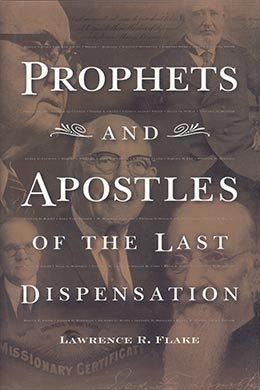Charles Wilson Nibley
Lawrence R. Flake, Prophets and Apostles of the Last Dispensation (Provo, Ut: Religious Studies Center, Brigham Young University, 2001), 269–71.
Born: 5 February 1849, Hunterfield, Midlothian Region, Scotland
Presiding bishop of the Church: 4 December 1907 to 6 October 1925
Second counselor to President Heber J. Grant: 28 May 1925 (age 76)
Died: 11 December 1931 (age 82), Salt Lake City, Utah
At the age of forty Charles W. Nibley was one of the most prosperous men in Cache Valley, Utah. His childhood, however, contained an incredible story of poverty. As a boy he lived with his family in that same valley in a one-room dugout. Describing his destitute circumstances, he wrote: “About the only clothing I had at that time was a pair of pants made from the tent which we used in crossing the plains, and which had grown so stiff and hard being weather-beaten in so many storms, and a shirt made of the same material, that when it touched my back or sides it nearly took the skin off, but it was the best I had and all I had. A rope tied around my waist was used to hold my pants up and my shirt down.” [1]
Charles went out to tend the herds each morning, carrying only one piece of bread for his lunch. He usually ate this meager meal before reaching the fields and went hungry until supper time. “I can remember that when I was hungry at dinner time about the only thing I could do to help my stomach was to tighten my rope.” [2] His family immigrated to Utah from his birthplace near Edinburgh, Scotland, where his mother, Jean Wilson Nibley, heard the missionaries preaching on the green of their little mining village. She recognized immediately in the words of the missionaries the answer to her lifelong search and joined the Church, along with her husband, within one week. They arrived in the United States in 1855 but remained for five years in Rhode Island working in the woolen mills to earn enough money to make the trek west. Although a boy of only nine, Charles toiled along with his father in the mills, earning what he could toward their journey. The Nibleys reached Utah in 1860, settling in Cache Valley.
Charles distinguished himself early as an unusually gifted child. He learned to read the Bible when only four years old, and at twelve, while herding his sheep, he read and memorized passages from the plays of Shakespeare and the writings of Robert Burns, his lifelong favorite poet. He had little education but gained what he could and entered various enterprises in Logan, Utah. Chief among these were the railroad, lumber, and sugar industries, all of which were astoundingly successful, bringing him eminence in the world of business affairs. But these successes never interfered with his devotion to the Church. As Bryant S. Hinckley observed, “While he has been a conspicuous leader in the industrial and financial world he has never slackened in his allegiance to his church, and all his life he has been a prayerful, thorough-going Latter-day Saint.” [3]
While serving in the British Mission in 1877, Elder Nibley formed a deep and rare friendship with his mission president, Joseph F. Smith. Thirty years later when Joseph F. Smith presided over the Church, he asked Brother Nibley to accompany him on a tour of the missions of Europe, and in 1907 called him to be presiding bishop of the Church. In this capacity Bishop Nibley traveled extensively with President Smith—to Hawaii, where they dedicated the temple site, and to Europe again. The Church greatly benefited from the financial genius of this experienced businessman; he completely revamped the tithing system, placing it all on a cash basis and doing away with “tithing orders.” In keeping with the principle of plural marriage, Brother Nibley had three wives and a large family that was the pride of his heart.
On 28 May 1925 President Heber J. Grant called Charles W. Nibley as his second counselor in the First Presidency, where he served diligently until his death in 1931. At the time of his appointment to this last great calling, the Improvement Era stated: “In our opinion no more suitable or capable man for the position could be found in all the land. He is an active, progressive and aggressive man of affairs, whose life and character are irreproachable and whose integrity is unquestioned. His judgment and ability are of the highest order and his spirituality is that of a good Latter-day Saint.” [4]
Notes
[1] Bryant S. Hinckley, “President Charles W. Nibley,” Improvement Era, December 1931, 70.
[2] Hinckley, “President Charles W. Nibley,” 70.
[3] Hinckley, “President Charles W. Nibley,” 70.
[4] “President Charles Wilson Nibley,” Improvement Era, July 1925, 883.
